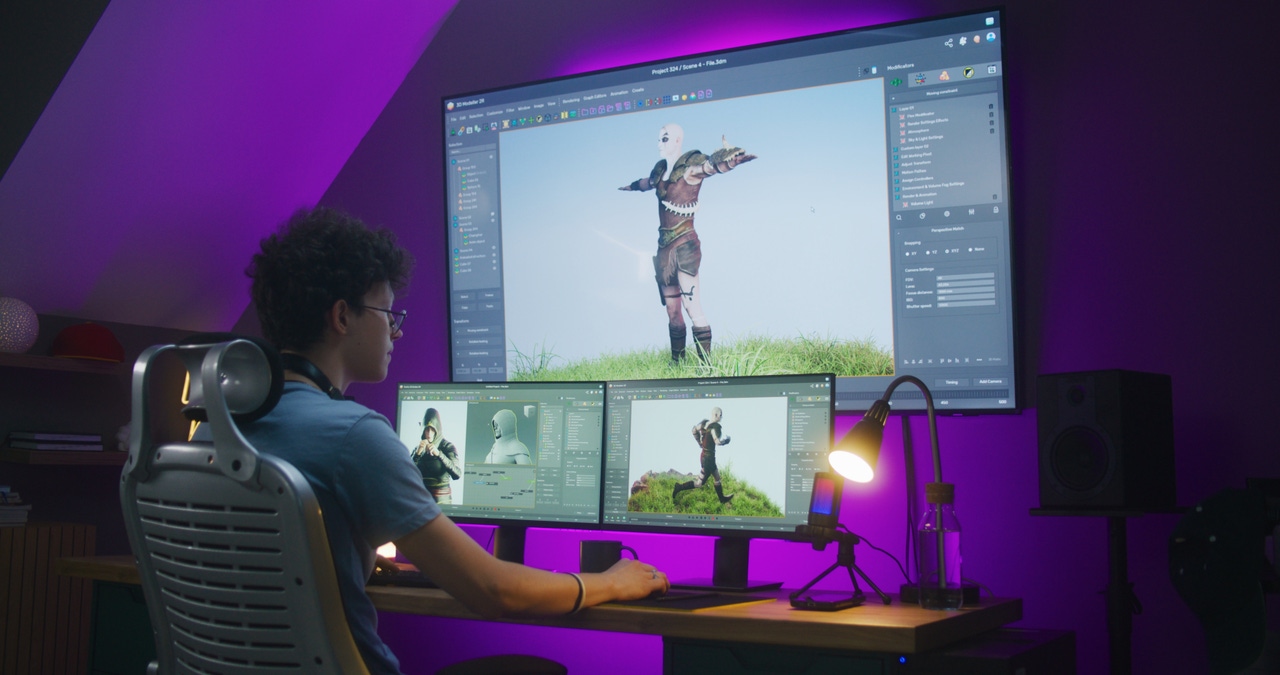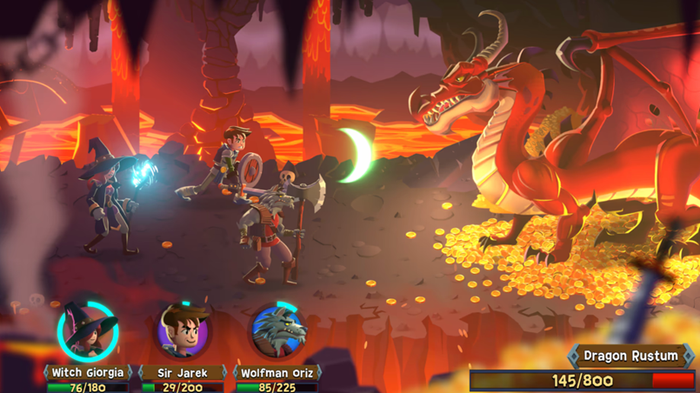Trending
Opinion: How will Project 2025 impact game developers?
The Heritage Foundation's manifesto for the possible next administration could do great harm to many, including large portions of the game development community.

Featured Blog | This community-written post highlights the best of what the game industry has to offer. Read more like it on the Game Developer Blogs or learn how to Submit Your Own Blog Post
Thanks to the constant development of technology and an ever-growing set of powerful tools, indie developers can create games that rival those made by big studios. If you're an indie developer looking to take your project to the next level, here's your essential toolkit for 2024.
November 11, 2024

Thanks to the constant development of technology and an ever-growing set of powerful tools, indie developers can create games that rival those made by big studios. Indie devs have always matched the big players in creativity and innovation, but now the tech is right there for the taking too.
Along with that, the tools for making games are changing and improving. So if you're an indie developer looking to take your project to the next level, here's your essential toolkit for 2024.
I have divided all the tools into main groups according to their purpose:
Game engines,
Audio tools,
Graphics and art tools,
Programming tools and IDEs,
Version control systems,
Libraries and middleware.
Let’s have a detailed look at each one.
According to the 2023 survey, among developers working in indie studios, 48% use Unity as their primary game engine and 20% use Unreal Engine.
So I won't be original if I say that when choosing a game engine you should pay attention to Unity. It is still one of the most popular game engines for indie developers. Why Unity? It’s incredibly versatile: you can create both 2D and 3D games for a variety of platforms, including PCs, consoles, and mobile devices. With a robust repository of assets and a large community, it offers extensive resources and support – an invaluable aspect when in-house resources are limited. User-friendly interface, extensive documentation, and strong community support are also among the huge advantages. Unity is ideal for developers who want flexibility and cross-platform capabilities.

Screenshot from the game. Image credit: unity.com
Now let's take a look at why 20% still seem to be a fan of Unreal Engine. It is renowned for its high-fidelity graphics and is a go-to choice for developers aiming for AAA-quality visuals. Many of those with minimal coding experience also prefer this engine, as thanks to Blueprints, a visual scripting system, they can quickly create prototypes without having to be a coder with decades of experience. Plus, another advantage is that until the game earns a certain income, it can be used for free.

Screenshot from the game. Image credit: unrealengine.com
A slightly less popular engine is Godot. It has gained considerable popularity due to its open-source nature and lack of royalties or subscription fees, making it a very lucrative choice for indie developer teams. It can do both 2D and 3D development and offers a node-based architecture, so it is quite intuitive for beginners. Community support is also a key factor. If you are looking for a free and open-source engine – Godot is your friend.

Screenshot from the game. Image credit: godotengine.org
Quality audio - one of the most important aspects of creating a successful game, especially for the audiophiles out there. With the abundance of tools and resources available, choosing the best ones for game development can be a lot. Let me streamline it for you.
One of the most popular tools is FMOD Studio. It is an audio middleware solution that simplifies the process of introducing complex audio into games. It supports adaptive audio, allowing sounds to change depending on game events. It has powerful features, and cross-platform support and is free for indie developers with some income.
Audacity is a free and open-source audio editor for recording and editing sounds. It is a great tool for basic audio manipulation and sound effects creation. It is easy to use, supports many formats and is free.
Melodrive is an artificial intelligence-driven music engine designed to create real-time adaptive music for interactive applications such as video games and virtual reality. It creates music that dynamically responds to gameplay, adjusting to the player's actions and environment to enhance immersion. One of the advantages is the creation of adaptive music in real-time. It is also widely appreciated for its support for multiple genres and emotional tones, seamless integration with game engines such as Unity and Unreal Engine, and the ability to adjust to the narrative and pace of the game.
Blender (does it even need an introduction?) is a free, open-source 3D creation package that does it all — modelling, rigging, animation, rendering, you name it. Its features rival those of pricey, proprietary software, making it a favourite among game developers. Game developers appreciate Blender for its extensive toolset, active development and large community. It is ideal for 3D modelling, animation and game asset creation.

Screenshots of an image created in Blender. Image credit: blender.org
For the connoisseurs of the retro feel and those who specialise in pixel art, Aseprite is a perfect tool dedicated for creating animated sprites and graphics. Its user-friendly interface makes creating pixel art accessible and efficient. Among the pros: specialisation for pixel art, animation support, and affordable price. Naturally – most suitable for 2D games with pixel-art aesthetics.

Screenshots of image creation in Aseprite. Image credit: aseprite.org
Some developers have successfully integrated Blender and Aseprite into their workflow, using Blender for 3D modelling and texturing, and then importing the results into Aseprite to refine pixel art and animation.
Another fun tool is Krita. It's a free, open-source drawing software for digital artists. It's great for creating concept art, textures and illustrations. The pros are simple: extensive brush engine, customisable interface and no cost.

Screenshots of image creation in Krita. Image credit: instagram.com/krita_foundation
DeepMotion offers artificial intelligence-based tools for real-time motion capture and 3D animation. By analysing the video signal, it generates motion data that can be applied to 3D characters, eliminating the need for traditional motion capture suits. Animators, game developers and directors who need motion data without the need for expensive equipment will get the most use out of it.

Screenshot of the work process in DeepMotion. Image credit: deepmotion.com
Graphics tools are, of course, chosen based on the developer's needs. For example, Blender offers comprehensive 3D modelling tools, including advanced sculpting and UV mapping, which Krita lacks. Krita excels with multiple brush types and stabilisers tailored for digital painting, which Blender doesn't offer. I might be saying an obvious thing, but identifying your needs and choosing software accordingly will save you time and resources in the long run.
The most popular tool among developers is Visual Studio. It is a powerful integrated development environment (IDE) developed by Microsoft. It has a complete set of tools for developing applications on various platforms, including desktop, web, mobile and cloud. With features such as intelligent code editing, advanced debugging, and seamless integration with Microsoft services, Visual Studio increases productivity and simplifies the development process. Ideal for: Coding in languages such as C++, C#, JavaScript and Python. Most professionals choose to use VS even though it is paid, unlike VS Code. VS Code has fewer features, but it is less resource-intensive and free to use.
For developers working with .NET and Unity, JetBrains Rider offers a fast and responsive IDE. It provides intelligent code completion and many features to improve productivity. JetBrains Rider has a very rich feature set, Unity integration and cross-platform support. It is best suited for developers who need an advanced IDE for working with C#.
Git is designed to handle everything from small to very large projects with speed and efficiency. With Git, multiple developers can work on the same project simultaneously without overwriting each other's changes. Enjoy a seamless collaborative environment! So, it is an essential tool for collaboration and also has extensive community support.
To use Git you can choose from a variety of providers, the best-known ones are GitHub (offers features such as pull requests, code reviews, issue tracking, and GitHub Actions for CI/CD workflows), GitLab (hosting repositories along with integrated CI/CD, project management tools) and Bitbucket (Atlassian's Git-based code hosting and collaboration tool).
Subversion (SVN) is a centralised version control system that helps developers manage changes to source code and files over time. It allows multiple contributors to work on a project by tracking each modification in a central repository. Moreover, it keeps a complete history of changes, allowing users to revert to earlier versions if necessary. Benefits – robust centralised control, easy to use, great for managing large binary files, mature and stable, with extensive documentation and community support.
When comparing Git and SVN, it is worth noting that Git is decentralised and therefore more flexible, while SVN is centralised, which limits its flexibility. But, SVN is much easier to learn and understand.
For indie developers venturing into multiplayer games, Photon is a reliable, tried-and-true networking solution. It's integrated with Unity and offers features like matchmaking and real-time communication. It is easy to implement, scalable and has good documentation. It is especially suitable for those who implement multi-user functionality.
If you are planning to release your game on Steam, Steamworks SDK will be indispensable. It allows you to integrate Steam features such as achievements, leaderboards and cloud saves. Another plus is the DRM support.
Box2D is an open-source 2D physics engine for modelling realistic physics for game development and interactive applications. It’s written in C++ and provides a framework for modelling rigid body dynamics including collision detection, friction, restitution and joint constraints. Due to the fact that it is widely used in the industry, Box2D has been ported to various programming languages and platforms, making it accessible to developers working in a variety of environments. Benefits: Realistic and efficient physics modelling, easy integration with game engines and frameworks, well-documented community support, cross-platform compatibility and the ability to be customised for specific project needs. Ideal for: game developers who want to implement accurate 2D physics in their projects, educational tools for teaching physics, and developers of simulators, platformers and puzzle games that require complex physics interactions.
Successful game development is nothing without the right tools and libraries. Even the brightest, most creative minds need robust tech to make their ideas come to life. Thankfully, we’ve reached a point of abundance, where for any task – there is a tool. The listed in the article are some of the most trusted and widely adopted in the indie game development community as of 2024. They strike a balance of functionality, community support, and affordability that can help bring your creative visions to life. Now, you can pick and choose from this range of options, and perhaps, become the next sensation in the indie game development industry.
You May Also Like